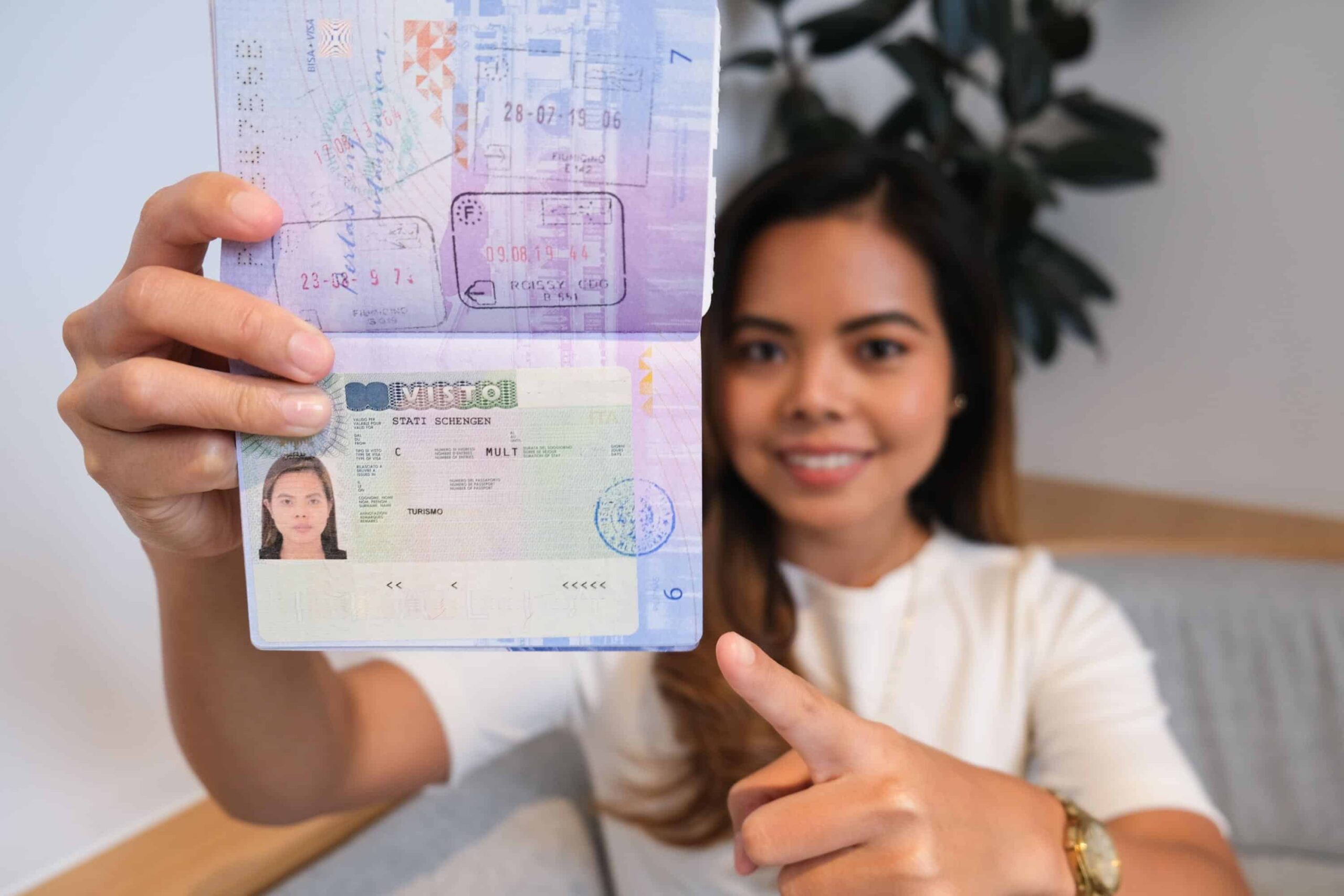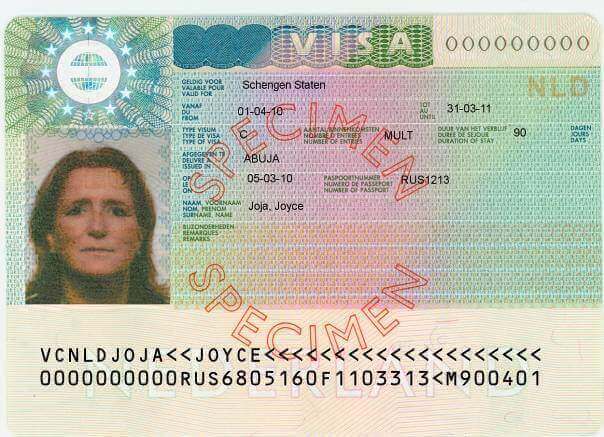New Schengen Visa rules 2024, Upcoming Schengen country list 2025 A Schengen Visa allows travel across 29 European countries. It facilitates movement without border checks within the Schengen Area.
A Schengen Visa is essential for non-EU citizens planning to visit multiple European countries. It permits travelers to move freely across 29 Schengen countries without undergoing border checks. This visa is perfect for tourists, business travelers, and those visiting friends or family.
The application process requires specific documentation, including travel insurance, proof of accommodation, and financial means. Applying for a Schengen Visa can be straightforward if all requirements are met. Each Schengen country might have slight variations in their process, but the basic requirements remain consistent. Ensure your application is thorough to avoid delays or rejections.

Credit: www.reddit.com
Introduction To Schengen Visa
A Schengen Visa is a travel document. It allows you to visit multiple European countries with one visa. This visa is very popular among tourists and business travelers. Understanding its purpose and the countries involved is crucial.
Purpose And Significance
The Schengen Visa simplifies travel across Europe. With it, you can move freely between member countries. This boosts tourism and business activities. It saves time and reduces paperwork for travelers.
This visa is essential for non-European Union citizens. It grants access to many beautiful and historic places. It also fosters cultural exchange and mutual understanding.
Countries Under The Schengen Agreement
The Schengen Area includes 29 countries. These countries have abolished border checks between them. This allows for seamless travel across their territories. Below is a list of the countries:
| Country | Capital |
|---|---|
| Austria | Vienna |
| Belgium | Brussels |
| Czech Republic | Prague |
| Denmark | Copenhagen |
| Estonia | Tallinn |
| Finland | Helsinki |
| France | Paris |
| Germany | Berlin |
| Greece | Athens |
| Hungary | Budapest |
| Iceland | Reykjavik |
| Italy | Rome |
| Latvia | Riga |
| Liechtenstein | Vaduz |
| Lithuania | Vilnius |
| Luxembourg | Luxembourg |
| Malta | Valletta |
| Netherlands | Amsterdam |
| Norway | Oslo |
| Poland | Warsaw |
| Portugal | Lisbon |
| Slovakia | Bratislava |
| Slovenia | Ljubljana |
| Spain | Madrid |
| Sweden | Stockholm |
| Switzerland | Bern |
Croatia, Bulgaria and Romania is the newest members having joined the Schengen Area. This diverse group offers rich experiences for visitors. Each country has unique attractions and cultures. The Schengen Visa makes exploring these places easier.
Types Of Schengen Visas
Travelers to the Schengen Area need to know about the different Schengen Visa types. There are three main categories. Each serves different travel purposes. Understanding these types helps you choose the right one.
Uniform Schengen Visas
Uniform Schengen Visas (USVs) allow entry into all Schengen countries. These visas are the most common. They come in three sub-types:
- Single-entry visa: Enter the Schengen area once. After leaving, you can’t return.
- Double-entry visa: Enter the Schengen area twice. After the second exit, re-entry is not allowed.
- Multiple-entry visa: Enter and exit the Schengen area multiple times. Valid for up to 90 days within a 180-day period.
Limited Territorial Validity Visas
Limited Territorial Validity Visas (LTVs) are restricted. They allow travel only to specific Schengen countries. These visas do not permit entry to other Schengen states.
LTVs are issued for humanitarian reasons, national interests, or under international obligations. They are less common than USVs.
National Visas
National Visas (NVs) are for long-term stays. They are also known as Type D visas. NVs are for students, workers, or residents. They allow travel to one specific Schengen country.
NVs can be single-entry or multiple-entry. Multiple-entry NVs permit travel to other Schengen countries for up to 90 days within a 180-day period.
Eligibility Criteria
The Schengen Visa allows you to travel across many European countries. To apply, you need to meet specific eligibility criteria. This section will help you understand the basic requirements and special conditions for different traveler categories.
Basic Requirements
To be eligible for a Schengen Visa, you must meet the following criteria:
- Valid Passport: Your passport must be valid for at least six months.
- Travel Insurance: You need insurance with coverage of at least 30,000 Euros.
- Proof of Funds: Show you have enough money to support your stay.
- Accommodation: Provide proof of where you will stay.
- Return Ticket: Show your return or onward travel plans.
Special Conditions For Different Traveler Categories
Different traveler categories have specific conditions to meet:
| Traveler Category | Special Conditions |
|---|---|
| Tourists | Provide your travel itinerary and hotel bookings. |
| Business Travelers | Show your invitation from a company or conference details. |
| Students | Submit your enrollment letter and proof of accommodation. |
| Family Visits | Provide a letter of invitation from your family. |
Application Process
Applying for a Schengen Visa might seem daunting, but it isn’t. This section breaks down the process into simple, manageable steps. Follow this guide to ensure a smooth application experience.
Step-by-step Guide
- Determine the type of visa you need: Tourist, Business, or other.
- Find the nearest embassy or consulate of the destination country.
- Fill out the application form: Available online or at the embassy.
- Pay the visa fee: Usually around €80 for adults.
- Book an appointment: Necessary for submitting documents and interviews.
- Attend the appointment: Bring all required documents.
- Wait for processing: This can take up to 15 days.
Documents Checklist
| Document | Details |
|---|---|
| Passport | Valid for at least 3 months after your trip. |
| Application Form | Completed and signed. |
| Photo | Two recent passport-sized photos. |
| Travel Itinerary | Details of flights and accommodation. |
| Travel Insurance | Coverage of at least €30,000. |
| Proof of Financial Means | Bank statements or sponsorship letters. |
Appointment And Interview
Booking an appointment is a crucial step. This can usually be done online through the embassy’s website. Ensure you book early as slots fill up fast.
During the interview, you may be asked about your travel plans and reasons for visiting. Be honest and provide clear answers. The interviewer will check your documents, so ensure they are complete and accurate.
After the interview, your application will undergo processing. Keep track of your application status online if possible.
Common Reasons For Visa Denial
Applying for a Schengen Visa can be stressful. Many applicants get denied for various reasons. Understanding these common reasons can help you prepare better.
Incomplete Documentation
One of the main reasons for visa denial is incomplete documentation. Every required document must be submitted. Missing even one document can lead to a refusal.
- Passport copies
- Travel insurance
- Flight itinerary
- Proof of accommodation
- Proof of financial means
Make sure all documents are current and valid. Double-check the list provided by the embassy.
Security Concerns
Security is a top priority. If there are security concerns, the visa application may be denied. This could include:
- Previous criminal records
- Connections to criminal organizations
- Suspicious travel history
Authorities may also check for false or misleading information. Always provide accurate and truthful details.
Past Immigration History
Visa officers review your past immigration history. If you have:
- Overstayed a visa
- Been deported
- Violated visa conditions
Your application might be denied. A clean immigration record improves your chances.
Ensure you comply with all visa rules to avoid issues.

Credit: visasassociation.com
Tips For A Successful Visa Interview
Preparing for a Schengen Visa interview can be daunting. Follow these tips to succeed. Proper preparation can make a significant difference.
Preparation Strategies
Proper preparation is crucial for your Schengen Visa interview. Follow these strategies:
- Gather all necessary documents: Passport, photos, application form, and proof of travel.
- Practice common questions: Prepare answers for standard interview questions.
- Dress appropriately: Wear formal attire to make a good impression.
- Arrive early: Reach the interview location at least 30 minutes early.
Frequently Asked Questions
Knowing the frequently asked questions can help you prepare better. Here are some common questions:
| Question | How to Answer |
|---|---|
| What is the purpose of your trip? | Explain your travel plans clearly. |
| How long do you plan to stay? | Give specific dates and duration. |
| Who will cover your expenses? | Mention your financial support or sponsor. |
| Do you have travel insurance? | Show your insurance documents. |
Practice these answers to boost your confidence during the interview. Stay calm, be honest, and you will do great!
Extending A Schengen Visa
Extending a Schengen Visa is possible under certain conditions. Knowing these conditions is essential for a smooth travel experience. This guide will help you understand when and how you can extend your Schengen Visa.
When Is It Possible?
Extending a Schengen Visa is possible for specific reasons. These reasons include:
- Humanitarian grounds: If you face unexpected events like illness.
- Important personal reasons: For instance, attending a family wedding.
- Force majeure: Natural disasters or other unforeseen events.
Extensions are not given for tourism purposes. Make sure to apply only if your situation is genuine.
The Application Procedure 2024
The application process for extending a Schengen Visa involves several steps:
- Visit the local immigration office: You need to go to the immigration office in the Schengen country where you are staying.
- Fill out the application form: Complete the visa extension form provided by the office.
- Submit required documents: Provide necessary documents such as your passport, current visa, and proof of your reasons for extension.
- Pay the fee: Pay the application fee as required by the local authorities.
Ensure your application is complete to avoid delays. Keep copies of all submitted documents for your records.
| Required Document | Details |
|---|---|
| Passport | Valid for at least three months beyond the intended stay |
| Current Visa | Original and copy of your current Schengen Visa |
| Proof of Reason | Documents supporting your extension reason (e.g., medical certificate) |
Following these steps increases your chances of approval. Make sure to apply before your current visa expires.
Schengen Visa And Long-term Residency
Planning to visit or stay in Europe? Understanding the difference between a Schengen Visa and Long-Term Residency is crucial. This will help you choose the right path for your needs.
Differences Between Visa Types
A Schengen Visa allows short-term travel within 29 European countries. It is mainly for tourism, business, or family visits.
A Long-Term Residency permit is for those who wish to stay for more than 90 days. It is often related to work, study, or family reunification.
| Schengen Visa | Long-Term Residency |
|---|---|
| Short-term stay (up to 90 days) | Long-term stay (over 90 days) |
| Travel within Schengen Area | Live in one specific country |
| No work allowed | Work allowed (with permit) |
| For tourism, business, family visits | For work, study, family reunification |
Path To Residency
Step 1: Determine eligibility. Check the requirements of the specific country. Each country has its own criteria.
Step 2: Gather documents. You may need proof of income, health insurance, and housing.
Step 3: Apply for a long-term visa. Submit your application to the consulate or embassy.
Step 4: Await approval. Processing times vary. Be patient and check the status regularly.
Step 5: Move and register. Once approved, move to the country. Register with local authorities upon arrival.
- Proof of income: Show you can support yourself.
- Health insurance: Provide proof of valid insurance.
- Housing: Show proof of accommodation.
Traveling With A Schengen Visa
Exploring Europe with a Schengen Visa is an exciting experience. This visa allows you to visit multiple countries with ease. Understanding the rules for border crossings and inter-Schengen travel is essential.
Border Crossing Guidelines
When entering the Schengen Area, have your documents ready. You will need your Schengen Visa, passport, and travel itinerary.
| Document | Details |
|---|---|
| Schengen Visa | Ensure it’s valid for your travel dates. |
| Passport | Must be valid for at least three months. |
| Travel Itinerary | Includes your accommodation and travel plans. |
At border control, officers may ask questions. Be prepared to answer questions about your travel plans.
- Why are you visiting?
- Where will you stay?
- How long will you stay?
Always carry a copy of your health insurance. It should cover at least €30,000 for medical emergencies.
New Schengen Country 2024
The newest members having joined the Schengen Area.
- Croatia
- Bulgaria
- Romania
Traveling within the Schengen Area is straightforward. You won’t face border checks between most countries.
Inter-schengen Travel
Keep your passport and Schengen Visa with you. Authorities might conduct random checks. Always be ready to show your documents if asked.
Some countries in the Schengen Area still have internal border checks. This can happen during special events or for security reasons.
- Germany
- France
- Austria
Using public transport makes inter-Schengen travel easy. Trains, buses, and flights connect major cities.
Enjoy the freedom of traveling with a Schengen Visa. Experience diverse cultures, cuisines, and landscapes.
Upcoming Schengen country list 2025
Cyprus is currently in the process of joining the Schengen area. Montenegro Despite having a close Schengen relationship, Montenegro is not yet a member of the Schengen Area. On the other hand, Montenegro is moving in the direction of potential Schengen membership.

Credit: visaguide.world
Frequently Asked Questions
What Is A Schengen Visa?
A Schengen Visa allows travel within 29 European countries without border controls.
How Long Can I Stay With A Schengen Visa?
You can stay up to 90 days within a 180-day period.
Which Countries Require A Schengen Visa?
Most non-EU citizens need a Schengen Visa to enter the Schengen Area.
How Do I Apply For A Schengen Visa?
Submit an application at the consulate of the country you plan to visit.
What Documents Are Needed For A Schengen Visa?
Essential documents include a valid passport, travel insurance, proof of accommodation, and financial means.
How Much Does A Schengen Visa Cost?
The standard fee for a Schengen Visa is €80 for adults and €40 for children.
Can I Extend My Schengen Visa?
Extensions are rare and usually only granted for emergencies or humanitarian reasons.
What Is The Processing Time For A Schengen Visa?
Processing usually takes 15 calendar days, but it can vary depending on the consulate.
Conclusion
Securing a Schengen Visa opens the door to exploring Europe’s diverse cultures and stunning landscapes. The process may seem complex, but with the right preparation, it’s achievable. Start planning your journey today and make unforgettable memories across the Schengen Area.





Leave a reply